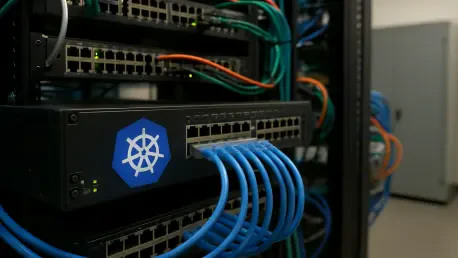In the ever-evolving landscape of cloud-native technologies, Kubernetes stands as a cornerstone for container orchestration, yet its complexity continues to challenge even the most seasoned developers, often leading to critical delays. Imagine a scenario where a single misplaced indentation in a configuration file halts an entire deployment, costing hours of debugging for a team racing against a product launch deadline. This is not a rare occurrence but a persistent reality for many navigating the intricate world of Kubernetes. As the community speculates about what a theoretical next major iteration might look like, discussions are heating up around innovative solutions to longstanding pain points. From the error-prone nature of YAML to the transformative potential of artificial intelligence and dynamic APIs, the push for a more streamlined and accessible platform is gaining momentum. This exploration delves into the critical challenges and emerging trends shaping the future of Kubernetes, offering insights into how the ecosystem might evolve to meet modern demands.
Navigating Configuration Complexities
The YAML Conundrum
The foundation of Kubernetes configuration lies in YAML, a format that, while widely adopted, often becomes a source of frustration due to its susceptibility to human error. A notorious issue, often referred to as the “Norway Problem,” exemplifies this, where a parser misinterprets inputs like “NO” as a boolean value instead of a country code, leading to unexpected failures. Such quirks force developers to spend valuable time troubleshooting rather than focusing on building features or enhancing applications. As a result, there’s growing interest in alternatives that could mitigate these risks. Tools like Pulumi and CDK8s are stepping into the spotlight, allowing configurations to be defined in familiar programming languages such as Python, Go, or TypeScript. These tools ultimately render the code into YAML for compatibility, but they reduce the likelihood of syntax errors by leveraging structured programming environments, aligning more closely with modern infrastructure-as-code practices.
Beyond merely replacing YAML, the conversation also includes enhancing the developer experience through supportive frameworks. Options like HashiCorp Configuration Language (HCL) are gaining traction as potential substitutes, offering a more intuitive syntax for defining resources. Meanwhile, SDKs tailored for Kubernetes are empowering teams to embed configuration logic directly into their development workflows, minimizing the manual handling of static files. This shift reflects a broader desire to move away from error-prone, text-based formats toward dynamic, programmatic solutions. While YAML remains the de facto standard for now, the momentum behind these alternatives suggests a future where configuration errors are less frequent, and developers can focus on innovation rather than syntax debugging. The challenge lies in balancing these new approaches with the need to maintain compatibility with existing systems, ensuring a smooth transition for widespread adoption.
Bridging Gaps with Emerging Tools
Another dimension of the configuration challenge is the sheer learning curve associated with mastering Kubernetes’ intricate setup processes. For many organizations, especially those new to cloud-native environments, the time and resources required to train teams can be daunting. This is where emerging tools are making a significant impact by simplifying interactions with the platform. Solutions that abstract away the raw YAML files into user-friendly interfaces or templates are becoming increasingly popular, allowing even less experienced developers to deploy and manage applications effectively. These tools often integrate validation checks to catch errors before they escalate, reducing downtime and frustration across development cycles.
Additionally, the rise of community-driven plugins and extensions is fostering a more collaborative approach to tackling configuration woes. These add-ons often provide pre-built configurations for common use cases, cutting down on the need to start from scratch. By leveraging such resources, teams can accelerate their workflows while adhering to best practices without deep expertise in every nuance of Kubernetes. This trend underscores a critical shift toward democratization of the platform, ensuring that its benefits are accessible to a broader range of users. As these tools continue to mature, they pave the way for a more inclusive ecosystem, where the focus shifts from overcoming technical barriers to driving business value through efficient container orchestration.
Embracing Innovation and Automation
AI as a Game-Changer
Artificial intelligence is rapidly emerging as a transformative force in addressing the inherent complexities of Kubernetes, offering solutions that go beyond traditional manual approaches. AI-driven tools, such as intelligent copilots and automated agents, are now capable of assisting developers throughout the lifecycle of application deployment. These systems can analyze configurations in real time, pinpointing potential security vulnerabilities or inefficiencies before they become critical issues. Moreover, they can generate YAML files from natural language inputs, drastically reducing the barrier to entry for those unfamiliar with the format’s intricacies. This capability not only saves time but also enhances accuracy, allowing teams to prioritize strategic tasks over repetitive manual work.
The scope of AI’s impact extends further into optimization and scalability, areas where Kubernetes often presents significant challenges. By leveraging machine learning algorithms, these tools can recommend best practices tailored to specific workloads, ensuring resources are allocated efficiently. They can also predict potential bottlenecks based on historical data, enabling proactive adjustments to configurations. This predictive power is particularly valuable in dynamic environments where workloads fluctuate unpredictably. As AI continues to integrate into the Kubernetes ecosystem, it offers a parallel path to improvement that doesn’t require a complete overhaul of the platform. Instead, it augments existing processes, making them smarter and more responsive to the needs of modern applications.
API-Driven Evolution and Future Directions
The Kubernetes ecosystem is also witnessing a shift toward more dynamic, API-driven frameworks that promise to redefine how developers interact with the platform. Innovations like the maturing Gateway API are simplifying complex networking tasks, providing a more intuitive way to manage ingress and routing compared to older methods. This advancement is part of a broader trend of incremental improvements that collectively shape the vision for what a future iteration of Kubernetes could entail. Enhanced security policies and automation through APIs are further streamlining operations, reducing the manual overhead that often bogs down teams managing large-scale deployments.
Equally important is the community’s focus on balancing innovation with practicality, ensuring that new API-driven tools integrate seamlessly with existing workflows. This approach acknowledges the diversity of environments in which Kubernetes operates, from small startups to global enterprises. Ongoing efforts to standardize and expand API capabilities are fostering greater interoperability, allowing for more customized solutions without sacrificing stability. As these developments unfold, they reflect a collective aspiration for a platform that is not only powerful but also accessible. Looking back, the strides made in API enhancements and automation highlight a pivotal moment in Kubernetes’ journey, setting the stage for a more efficient and user-friendly future in cloud-native orchestration.









